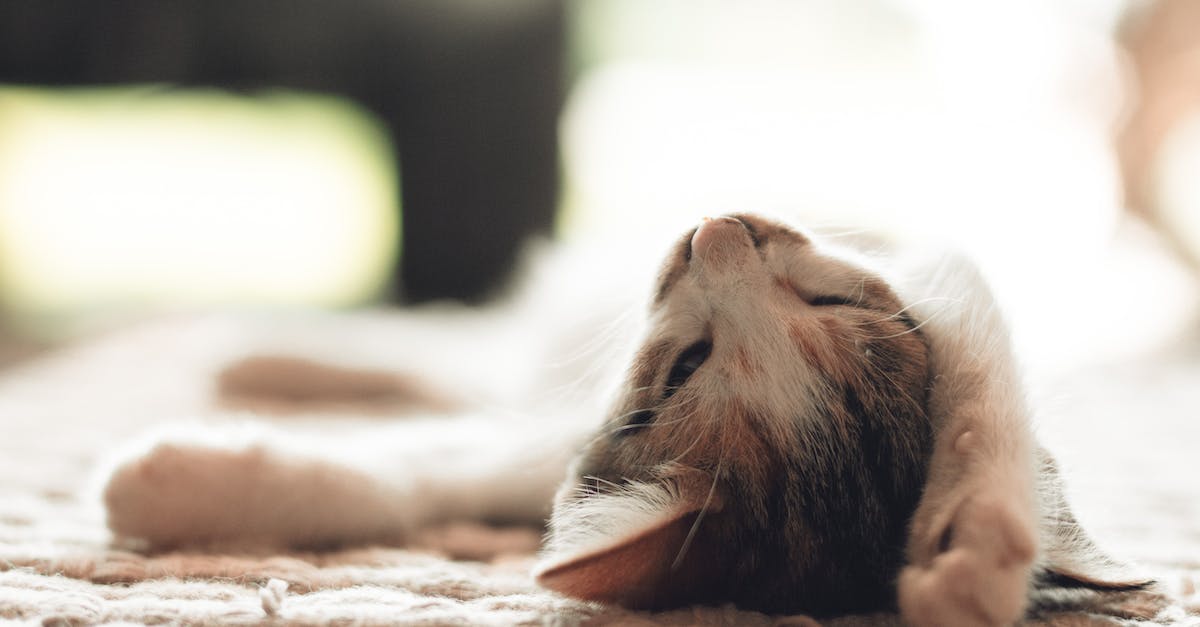Business
Easy Tips for Introducing Food to Kittens & Ensuring a Smooth Transition
Discover the best way to introduce food to your adorable kittens with these expert tips. Create a peaceful setting, establish a routine, and reward positive behavior. Remember, patience is key – let them adjust gradually. Also, keep a close eye on their digestion to ensure a smooth transition.
Published
1 year agoon

Hey there, fellow feline enthusiasts! If you’re a proud new kitten parent, you may be wondering how to go about introducing food to your adorable little furball. Well, fear not, because I’m here to guide you through this important milestone in your kitten’s life. In this article, we’ll explore the best practices for introducing food to kittens, from the right age to start, to the types of food to offer, and even some handy tips to make the process as smooth as possible. So, let’s dive right in and ensure your tiny bundle of joy gets off to a great start in their culinary adventures!
Are you ready to embark on a culinary journey with your furry friend? Introducing food to kittens is an exciting and crucial step in their development, and it’s important to get it right from the start. In this article, I’ll be sharing my top tips and tricks for making this transition as seamless as possible. We’ll cover everything from determining the ideal age to introduce solid food, to choosing the right type of food for your little one’s growing needs. So, if you’re curious about how to nourish your kitten with a balanced and nutritious diet, keep reading to discover all you need to know.
Calling all cat lovers! If you’ve recently welcomed a new kitten into your home, you may be wondering how to introduce them to the world of food. Well, you’re in luck because I’m here to help you navigate this exciting phase. In this article, we’ll explore the ins and outs of introducing food to kittens, including when to start, what to feed, and how to make mealtime a positive experience for your furry friend. So, if you’re eager to ensure your little ball of fluff grows up healthy and happy, stick around as we uncover the secrets to successful kitten feeding.
The Importance of Introducing Food to Kittens
As a cat owner and a passionate pet lover, I understand the significance of properly introducing food to kittens. This crucial step sets the foundation for their lifelong nutritional needs and habits. Here’s why introducing food to kittens is so important:
1. Ensuring Adequate Nutrition: Kittens have unique nutritional requirements that are different from adult cats. Properly introducing them to a balanced and age-appropriate diet is essential for their healthy growth and development. Kittens need a diet that is rich in protein, essential fatty acids, vitamins, and minerals to support their rapidly growing bodies.
2. Encouraging Proper Chewing and Swallowing: Introducing solid food to kittens helps them develop the necessary chewing and swallowing skills. It allows their jaw muscles to strengthen and prepares them to transition to a fully solid diet. This gradual process helps prevent choking or digestive issues as they grow.
3. Building a Positive Mealtime Experience: By introducing food to kittens in a structured and positive manner, we can help foster a healthy relationship with food. Creating a calm and quiet environment during mealtime and offering rewards or praise can make the experience enjoyable for the kitten, reducing their anxiety and promoting positive mealtime behaviors.
4. Establishing Healthy Eating Habits: Teaching kittens to eat from a young age sets the stage for good eating habits in adulthood. Feeding them at regular intervals and providing appropriate portion sizes helps them develop a healthy appetite. It also establishes a routine that can prevent obesity and other potential health issues.
5. Bonding Opportunity: The process of introducing food to kittens can be a wonderful bonding opportunity between you and your feline friend. Taking the time to hand-feed them or interact during mealtime allows you to build trust, strengthen your relationship, and provide a sense of security and comfort to your new companion.
Remember, introducing food to kittens should be a gradual process that takes into account their age and individual needs. It’s always a good idea to consult with a veterinarian for specific guidance on the best approach for your kitten’s dietary transition.
Determining the Right Age to Start
When it comes to introducing food to kittens, it’s important to consider their age. Determining the right age to start the introduction of solid food is crucial in ensuring that kittens receive the necessary nutrition for their optimal growth and development.
Typically, kittens begin to show interest in solid food at around four weeks of age. At this stage, they start to explore their surroundings and become more curious about what their mother and littermates are eating. This is a natural and instinctive behavior that signals their readiness to start the weaning process.
However, it’s essential to understand that every kitten is unique. Some may show interest in solid food earlier, while others may take a bit longer to transition. As a responsible pet owner, it’s important to monitor your kitten’s behavior and pay attention to their development cues.
One way to determine if your kitten is ready for solid food is by observing their teeth. Kittens typically start getting their baby teeth around three to four weeks of age, and these teeth play a crucial role in their ability to chew and bite food effectively. Once their teeth start to come in, it’s a good indication that they are ready to explore solid food.
Another factor to consider is their level of independence. Kittens that are comfortable exploring outside of their nest and are starting to develop their coordination may be more ready to start with solid food. Their ability to lap liquids from a shallow dish is also a sign that they are ready for the next step in their diet.
Remember, always consult with your veterinarian to determine the right age to start introducing solid food to your kitten. They can provide valuable guidance based on your kitten’s individual needs and development.
By determining the right age to start, you can ensure a smooth transition to solid food and provide your kitten with the nutrition they need to thrive. So, keep a close eye on their behavior, teeth development, and readiness for independence, and consult your veterinarian to make the best decision for your little furry friend.
Choosing the Best Type of Food for Kittens
When it comes to introducing food to kittens, choosing the right type of food is crucial for their health and development. Here are some important considerations to keep in mind when selecting the best food for your little furball:
1. Age-appropriate formulas: Kittens have specific nutritional needs, so it’s important to choose a food that is specially formulated for their age. Look for labels that indicate the food is formulated for kittens or for all life stages. These formulas are designed to provide the right balance of nutrients that growing kittens require.
2. Wet vs. dry food: Both wet and dry food can be suitable options for kittens, but it’s good to offer a combination of both. Wet food helps kittens stay hydrated and can be easier for them to eat, especially if they are transitioning from their mother’s milk. Dry food, on the other hand, helps promote dental health and can be left out for kittens to nibble on throughout the day.
3. High-quality ingredients: Reading the ingredient list is essential. Look for foods that contain high-quality protein sources, such as chicken, turkey, or fish. Avoid foods that contain excessive fillers or by-products, as they may not provide the essential nutrients your kitten needs.
4. Avoid certain ingredients: Some ingredients can be harmful to kittens, such as onions, garlic, and artificial additives. Make sure to check the ingredient list for any potential allergens or ingredients that kittens should avoid.
5. Consult with your veterinarian: Every kitten is unique, and their dietary needs may vary. It’s always a good idea to consult with your veterinarian to determine the best type of food for your specific kitten. They can provide personalized guidance and recommendations based on your kitten’s age, breed, and overall health.
Remember, introducing solid food to kittens is a gradual process. Start by offering small amounts of food mixed with a little water or kitten milk replacer. As they grow more comfortable with the new tastes and textures, you can gradually increase the amount of solid food and decrease the liquid portion.
By choosing the best type of food for your kitten’s needs, you are setting the foundation for a healthy and happy life. So take your time, do your research, and consult with your veterinarian to ensure you’re making the best choices for your little furry friend.
Introducing Wet Food
When it comes to introducing solid food to kittens, wet food is an excellent choice. It provides hydration and is easier for kittens to chew and swallow compared to dry kibble. Here’s a step-by-step guide on how to successfully introduce wet food to your kitten:
1. Choose the right type of wet food: Look for age-appropriate formulas that are specifically formulated for kittens. These formulas have the right balance of nutrients that growing kittens need.
2. Start with a small amount: Begin by offering your kitten a small amount of wet food. You can mix it with some warm water to make it easier for the kitten to lap up.
3. Observe the kitten’s reaction: Pay close attention to how your kitten responds to the wet food. Some kittens may take to it right away, while others may be a bit hesitant. Be patient and give your kitten time to adjust.
4. Gradually increase the amount: As your kitten becomes more comfortable with the wet food, gradually increase the amount offered. You can mix it with less water until your kitten is eating it in its pure form.
5. Monitor your kitten’s digestion: Keep an eye on your kitten’s digestion after introducing wet food. Look for any changes in their bowel movements or signs of discomfort. If you notice any issues, consult with your veterinarian.
6. Offer a variety of flavors: To ensure that your kitten develops a diverse palate, introduce different flavors of wet food. This will help prevent picky eating habits in the future.
7. Remember to consult your veterinarian: It’s always a good idea to consult with your veterinarian before making any changes to your kitten’s diet. They can provide personalized guidance based on your kitten’s specific needs and health conditions.
By following these steps, you can successfully introduce wet food to your kitten and ensure they are getting the nutrients they need for healthy growth. Remember to be patient and make any changes gradually to avoid overwhelming your furry friend.
Introducing Dry Food
When it comes to introducing dry food to kittens, it’s important to follow a gradual and measured approach. This will help your furry friend transition from wet food to a solid diet without any upset stomach or digestive issues. Here’s a step-by-step guide on how to introduce dry food to your kitten:
- Choose the right formula: Just like with wet food, it’s important to select a high-quality dry food that is specifically formulated for kittens. Look for a product that is labeled as “kitten growth” or “kitten formula” to ensure that it meets their nutritional needs.
- Start with small amounts: Begin by mixing a small amount of dry food into your kitten’s wet food to familiarize them with the taste and texture. Gradually increase the proportion of dry food over time, while decreasing the wet food. This gradual transition will help your kitten adapt to the new diet more easily.
- Ensure proper hydration: Dry food has a lower moisture content compared to wet food, so it’s important to make sure your kitten stays properly hydrated. Always provide your kitten with fresh water alongside their dry food, and monitor their water intake closely to avoid dehydration.
- Monitor digestion: As you introduce dry food, keep a close eye on your kitten’s digestion. Look out for any signs of discomfort, such as constipation or diarrhea. If you notice any issues, it’s important to consult with your veterinarian for guidance. They can provide personalized advice based on your kitten’s specific needs.
- Stick to a consistent feeding schedule: Establishing a consistent feeding schedule is crucial for your kitten’s overall well-being. Divide their daily portion of dry food into multiple small meals throughout the day. This will help maintain their energy levels and prevent overeating.
By following these steps, you’ll be able to successfully introduce dry food to your kitten. Remember, every kitten is different, so it’s important to monitor their progress and make any necessary adjustments to ensure they receive the necessary nutrients for healthy growth.
Making Mealtime a Positive Experience
When introducing dry food to kittens, it’s important to create a positive mealtime experience to ensure they enjoy and look forward to their meals. Here are a few tips to make mealtime a pleasant and stress-free activity for your furry friend:
1. Establish a routine: Cats are creatures of habit, and they thrive on routine. Set a regular feeding schedule for your kitten and stick to it. This will help them develop a sense of structure and stability around mealtime, making it a more enjoyable experience for them.
2. Create a calm environment: Find a quiet and comfortable spot for your kitten’s meals. Avoid placing their food bowl near loud noises or high-traffic areas, as this can cause them to feel anxious or distracted during mealtime. By creating a calm environment, you can help your kitten focus on their food and eat at their own pace.
3. Use positive reinforcement: Kittens respond well to praise and rewards. Whenever your kitten starts to eat their dry food, offer words of encouragement and give them a gentle pet or a treat. This positive reinforcement will help them associate mealtime with positive experiences, reinforcing the idea that dry food is something enjoyable and rewarding.
4. Avoid rushing or force-feeding: It’s important to give your kitten time to explore and adjust to the new dry food. Avoid rushing or force-feeding your kitten, as this can lead to aversions or negative associations with the food. Instead, be patient and allow them to gradually get used to the texture and taste of the dry food.
Remember, every kitten is unique, and it may take time for them to fully transition to dry food. By following these tips, you can help make their mealtime a positive experience and ensure they receive the essential nutrients they need for healthy growth.
Now that we’ve covered how to make mealtime a positive experience, let’s move on to the next essential step in introducing dry food to kittens: monitoring their digestion.
Conclusion
Introducing food to kittens can be a delicate process, but with the right approach, it can be a positive experience for both you and your furry friend. By following the tips provided in this article, you can ensure that mealtime becomes a routine that your kitten looks forward to.
Remember to establish a regular feeding schedule and create a calm environment to reduce any anxiety or stress. Use positive reinforcement, such as praise or treats, to encourage your kitten to try the new food. Avoid rushing or force-feeding, as this can create negative associations with mealtime.
It’s important to understand that every kitten is unique in their transition to dry food. Allow them time to adjust gradually and monitor their digestion closely. If you notice any issues, consult with your veterinarian for further guidance.
By implementing these strategies, you can help your kitten develop healthy eating habits and set them up for a lifetime of balanced nutrition. Enjoy this special bonding time with your new furry friend and watch them thrive as they grow.
Frequently Asked Questions
Q: How can I make mealtime a positive experience when introducing dry food to kittens?
A: To make mealtime a positive experience, establish a routine and create a calm environment. Use positive reinforcement by offering praise and rewards for eating. Avoid rushing or force-feeding. It is important to allow kittens to gradually adjust to the new food and remember that every kitten is unique in their transition. Monitoring their digestion is the next essential step in introducing dry food to kittens.
With over a decade of experience in the tech industry, Priya Sharma is a seasoned software engineer and tech blogger. She holds a Bachelor's degree in Computer Science from the Indian Institute of Technology (IIT) and has been a key contributor to cutting-edge projects in artificial intelligence and software development.

You may like
Mobility Scooter


Sideways Market: Navigating the Fluctuating Trends
Understanding Market Volatility Market volatility refers to the degree of variability in the price of a financial instrument within a...


Enhance Your iPhone with Adorable Cute Wallpapers
Looking to jazz up your iPhone screen with some cuteness? Discover the impact of adorable wallpapers on your device's look...


Glow Berry Prime: The Science Behind its Skincare Revival
Discover the transformative power of Glow Berry Prime in skincare with its potent blend of 20% Vitamin C, 2% Hyaluronic...


Glov Beauty: Eco-Friendly Products Review | Glov Beauty Reviews
Discover Glov Beauty's eco-friendly products like the Glov On-The-Go set with 500+ uses and the gentle exfoliation offered by the...


Unlocking Drake’s FPS Lyrics: How Gaming Influences His Music
Discover how Drake's lyrics in the first-person shooter-inspired track "War" reflect the influence of FPS games on his music. With...


Defeating a Fire-Breathing Dragon: Strategies for Mage Survival
Prepare yourself for an intense battle as we explore how to face a dragon capable of reaching temperatures over 2000°F....


Exploring Student Life at Glitties Eckerd College
Discover the dynamic student experience at Glitties Eckerd College with a plethora of club options, competitive sports, and community service...


Discover Success Stories with Money6x Real Estate Strategy
Discover the lucrative world of real estate investing with Money6x strategy! Uncover real-life success stories of investors achieving impressive 8-12%...


Get an Inside Look at Julion Alvarez’s 2024 USA Tour
Discover the meticulous planning behind Julion Alvarez's 2024 USA tour! Dive into the world of setlist curation, choreography design, and...


Enhancing Connections through Diversity & Active Listening
Learn how treating peers with empathy and actively listening can enhance relationships and boost innovation. The article emphasizes the significance...